Agemonia – big, bold and brilliant
I have memories from when I was about seven or eight years old of using my dad’s graph paper to plot maps for a game that I was never able to fully realise. It was some kind of adventure through forests and mountains, and in my mind it was complex and full of narrative and danger. 35 years later I find myself playing Agemonia and, writing this, I’m starting to realise that this is the epic adventure I’ve been waiting all these years for.
Agemonia is not just a big box experience. No, it’s a huge box experience. It ships in what is comfortably the largest box in my collection, and for those that have them already, it is easily a rival for Gloomhaven or even Frosthaven. Within the box, players will find two large card boxes filled with “spoiler alert” cards that protect scenario specific cards, as well as a myriad of side quests, ally and henchman cards, items and lots, lots more.
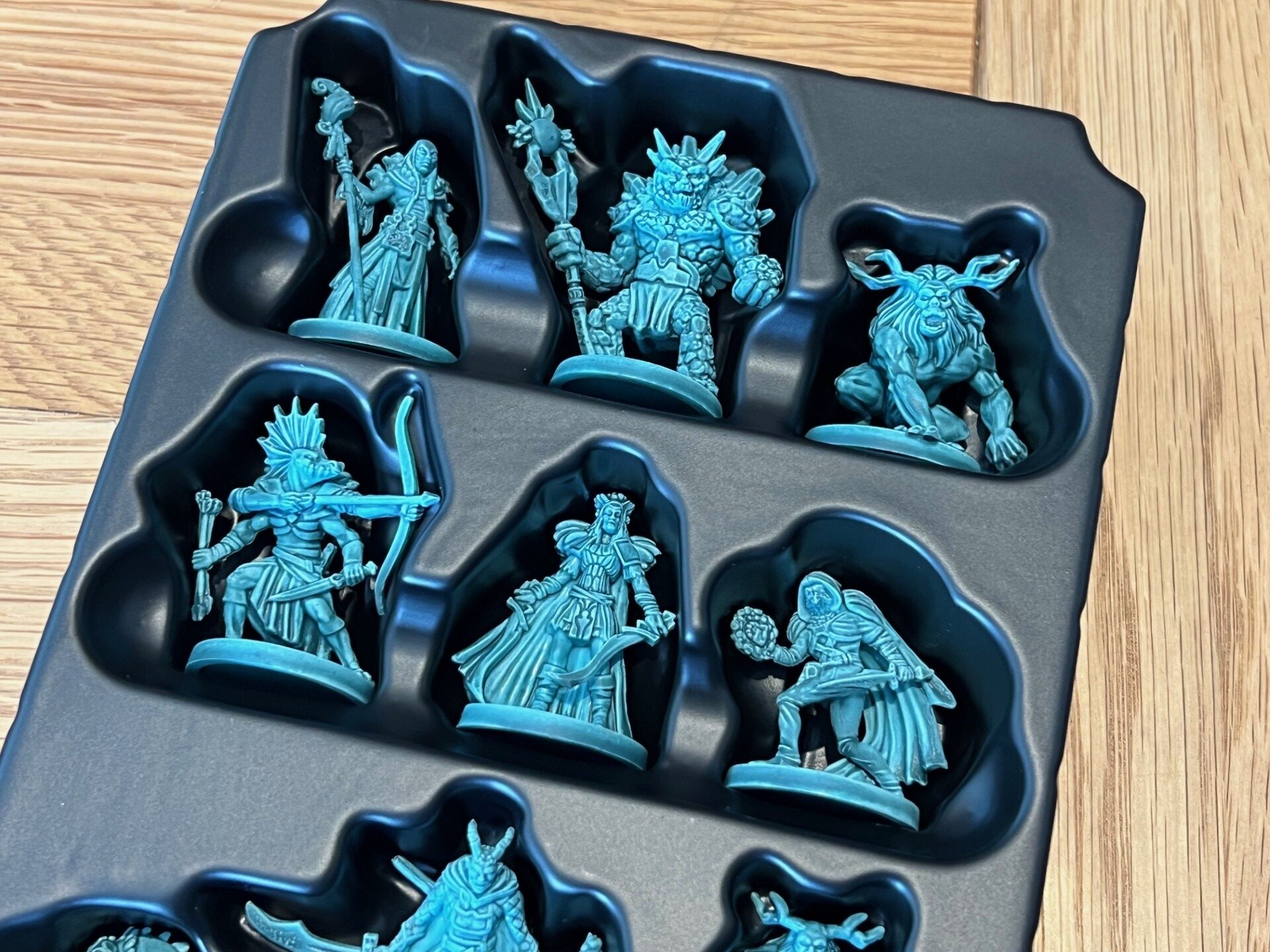
There are also many, many plastic trays to help organise the game. One contains all your coins, another all your items and objective tokens. Yet another contains a huge number of enemy character standees and their bases, whilst two more contain player character miniatures (either sundrop painted or not), dice, gems and scenario specific tokens and characters.
There’s a separate box for each of the four characters that might be active at any time during your campaign. These contain the character board, vitality chip, a number of stamina chips linked to the current character level, and then a load of other things that you may or may not have collected — things like items, skills and other trinkets or story related components. There are still more trays, but to be honest I can only keep listing them for so long before even I get bored. Suffice to say, despite the size of the box, Agemonia is nothing if not well organised.
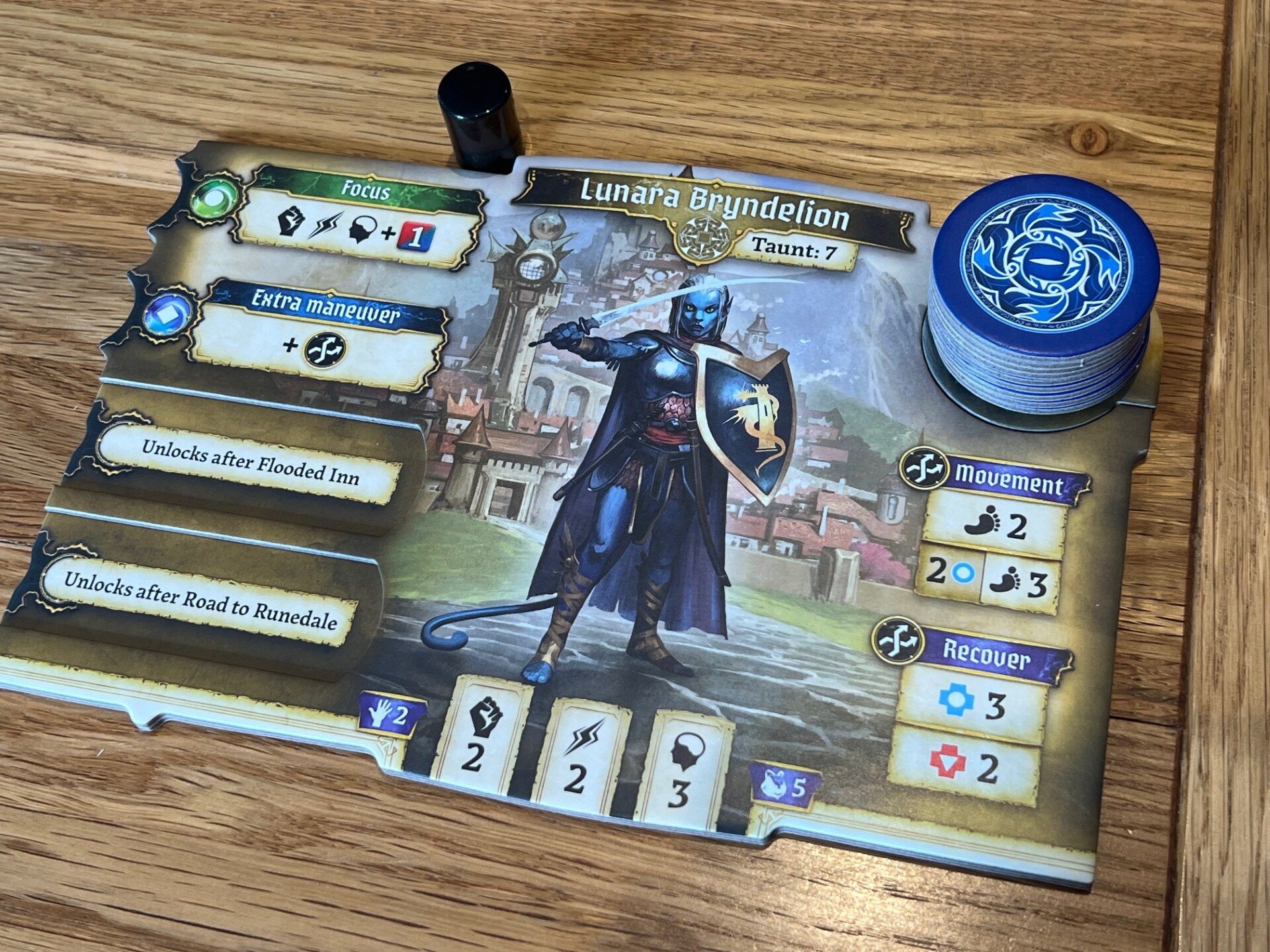
Then, there’s the paperwork. Every character gets their own little book detailing a character specific quest and storyline — you won’t use these right away, though. Then there is a rulebook, a campaign book, a scenario book and a story book. The latter three of these are presented as large ring bound books with bright printing and a superb finish, and within these books you’ll find the story sections that take place between encounters and the maps for those actual encounters, which is a style we’ve seen in other games like Stuffed Fables and Gloomhaven: Jaws of the Lion.
With all this stuff, you’d think that Agemonia might be quite daunting, and I suppose it is the first time you go to punch and sort the components and set up the first game. After that, however, any concerns will quickly dissipate thanks to a very straightforward tutorial structure. As a quick note on spoilers, all of the pictures in this review use only components from these tutorials (of which there are three) and basically, you won’t need to read the rules at all whilst you go through these three scenarios because everything you need to know is printed on the books.
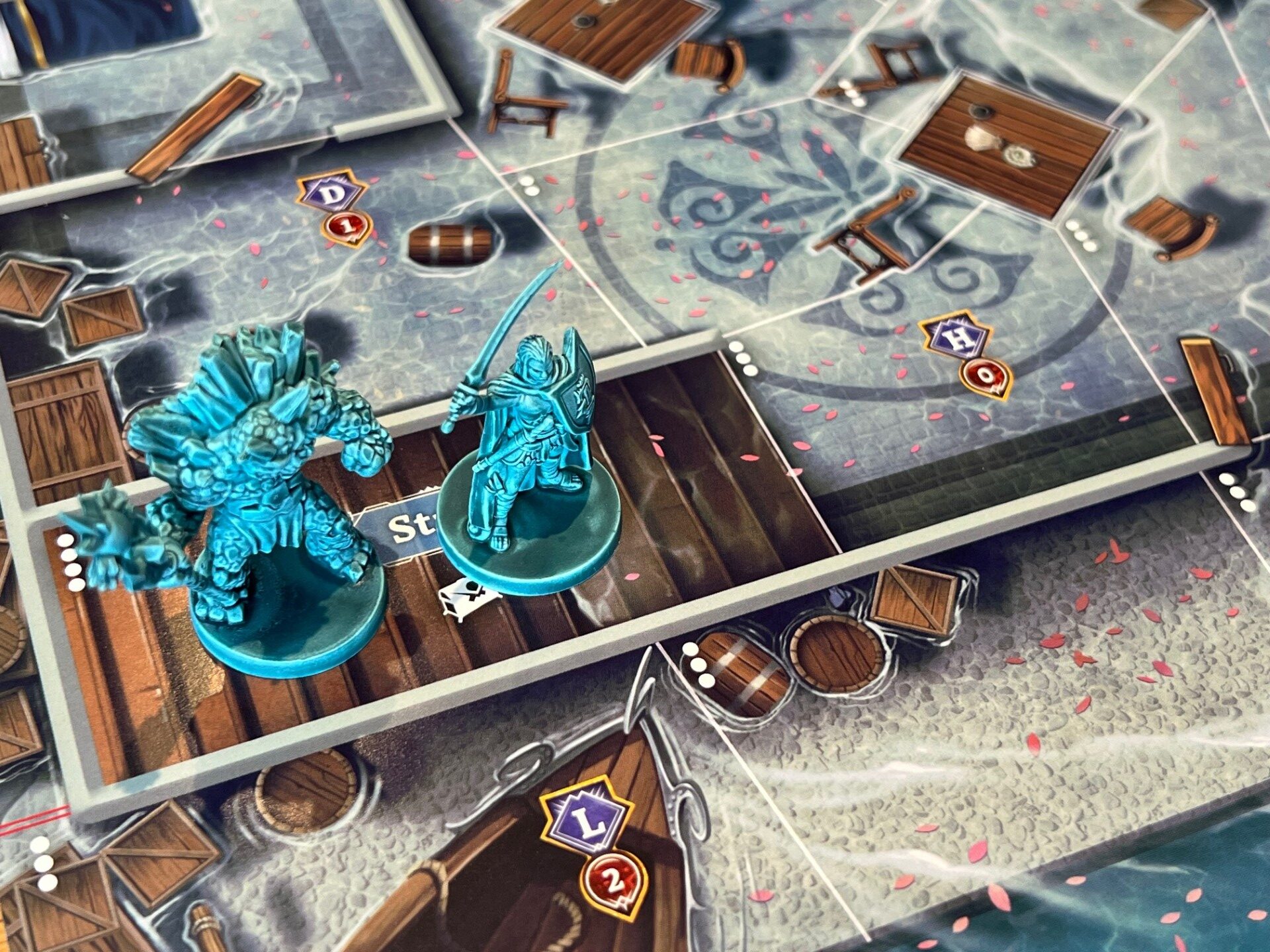
In all cases that I encountered, Agemonia takes place in alternating city and then scenario settings. So you’ll spend some time in the city, mainly unlocking new quests, purchasing items, preparing yourself for whatever comes next and perhaps working through various story beats. This will include progressing the main quest for the most part, but after the tutorial, you’ll also find ways to progress your own character’s side story, and sometimes this will unlock even more new and interesting content.
The main time you spend with Agemonia will be linked to one of the many, specific scenarios. Most of these scenarios are structured to include a one or two page spread in the scenario book, and then a deck of cards bookended by two “spoiler alert” placeholder cards. I was quite surprised by the variety of missions on offer here, and I loved how Agemonia uses some simple ideas to powerful effect.
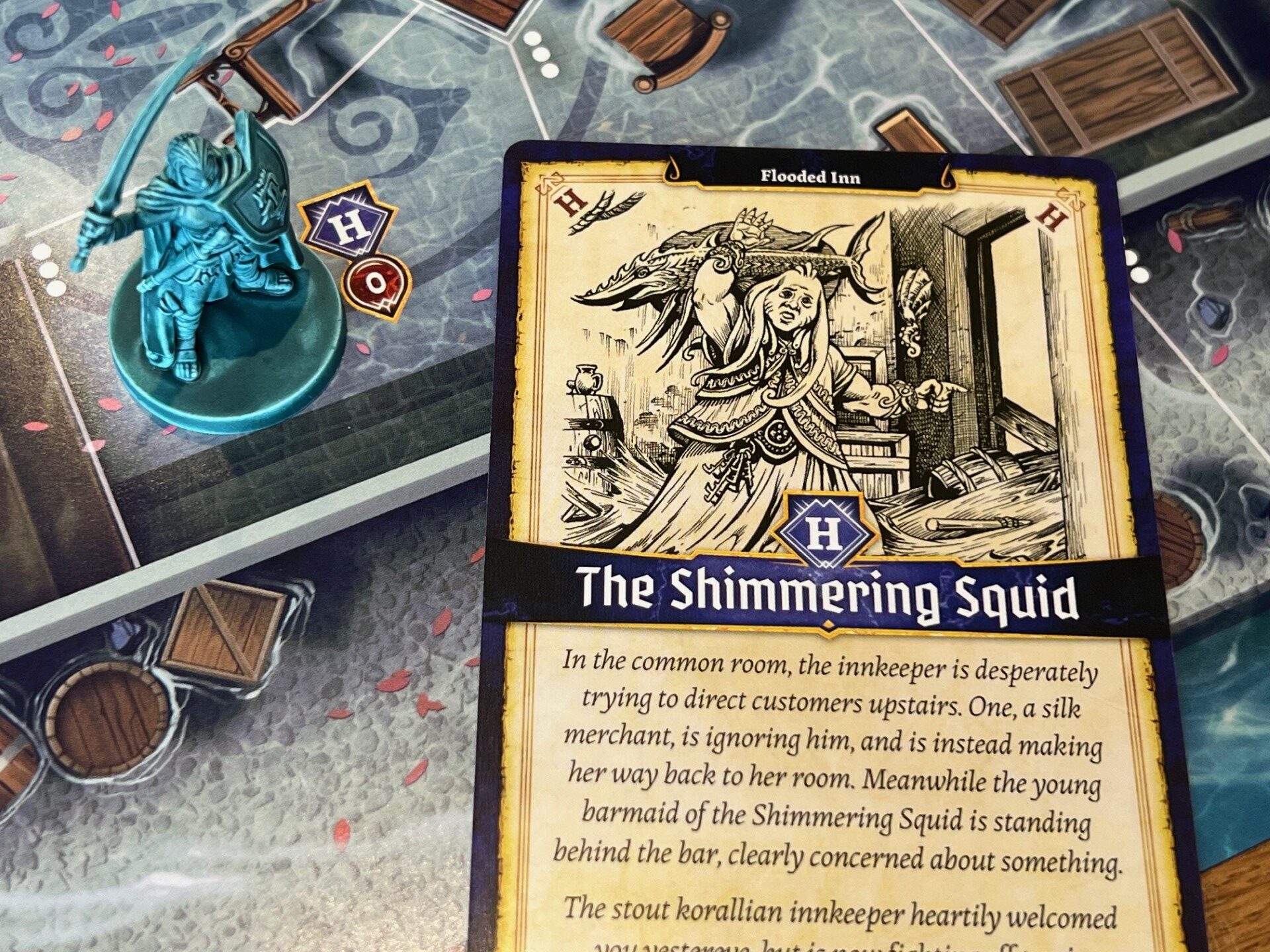
To make this example, almost every scenario will have one or more tokens marked on the map to denote something to do with the scenario setup. This might include mushrooms that need to be collected, or perhaps barriers that can’t be crossed — and these will almost always be understood from the get-go. There will also be a number of spaces that include letters A-Z and a range from which they can be examined.
Players will explore the map, usually trying to complete one or more objectives within a given time frame, and as they reach these lettered spaces, cards will be revealed to explain what is happening in that space. Often, this will be a bit of flavour text relating to the current situation, but just as often there will be characters, enemies or other objects in the world that either lead to a fight or a test.
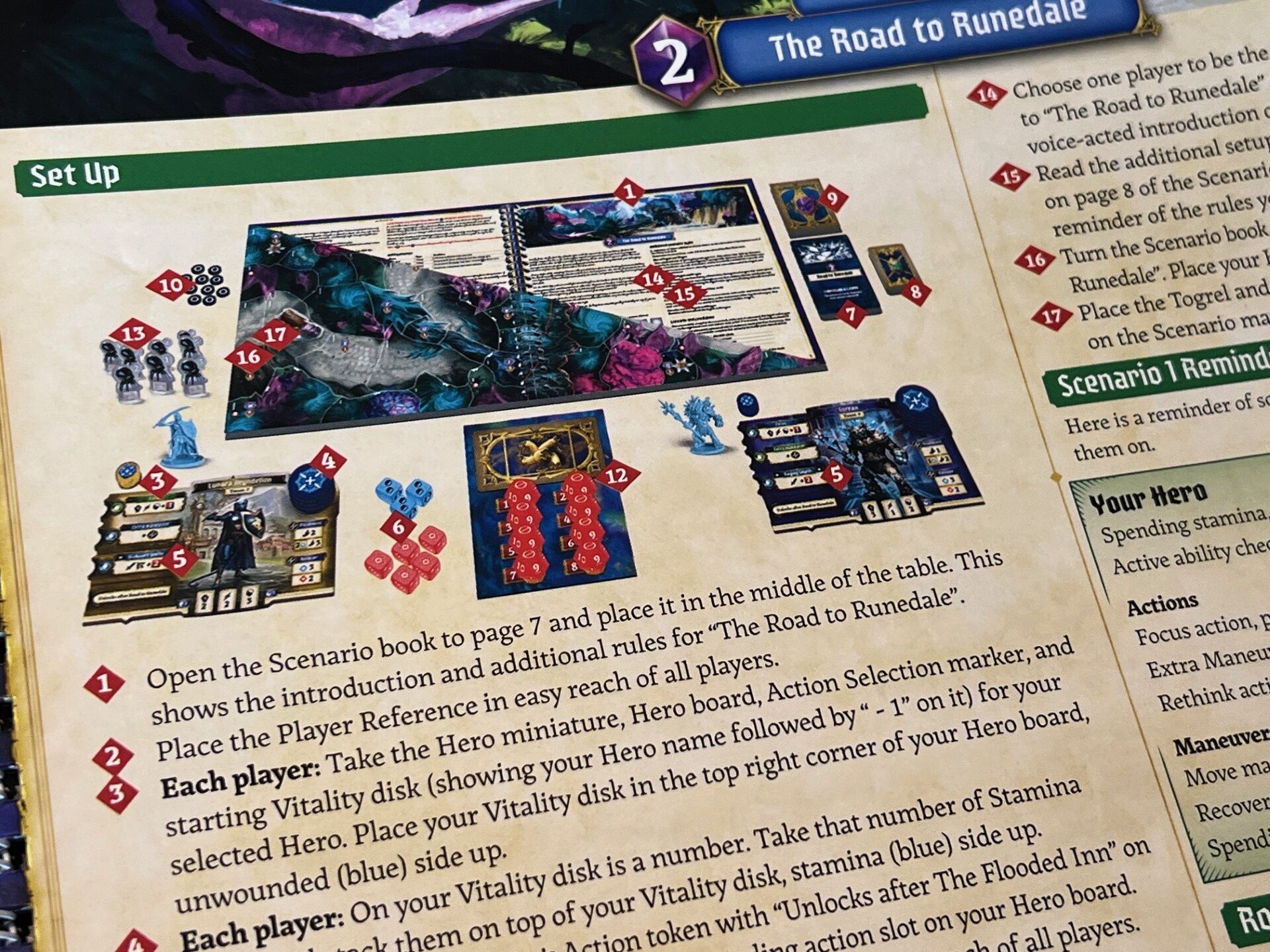
Tests are simple, and usually optional. If in range, a player can test one of their three key stats – like strength or willpower as denoted on the card, and if successful, they’ll be able to flip the card. There are occasionally fail conditions, so deciding whether or not you want to take a test is likely linked to your strength in the area subject to testing. Dice are rolled to take a test, with successes rolled being added to your base stat and overall success being achieved if you have a total number equal to or greater than the test value. Some die faces show a push symbol, and where this happens, players can spend a stamina to add a success.
On the note of stamina, each character will receive stamina chips based on the value shown on their vitality chip. There are five chips for each character, and when a character levels up, a new chip will replace the old, increasing the amount of total stamina they have. This is important because stamina acts as both health and your ability to exert yourself, so having a lot of stamina is key to success regardless of whether you are playing as a spellcaster or a melee tank.
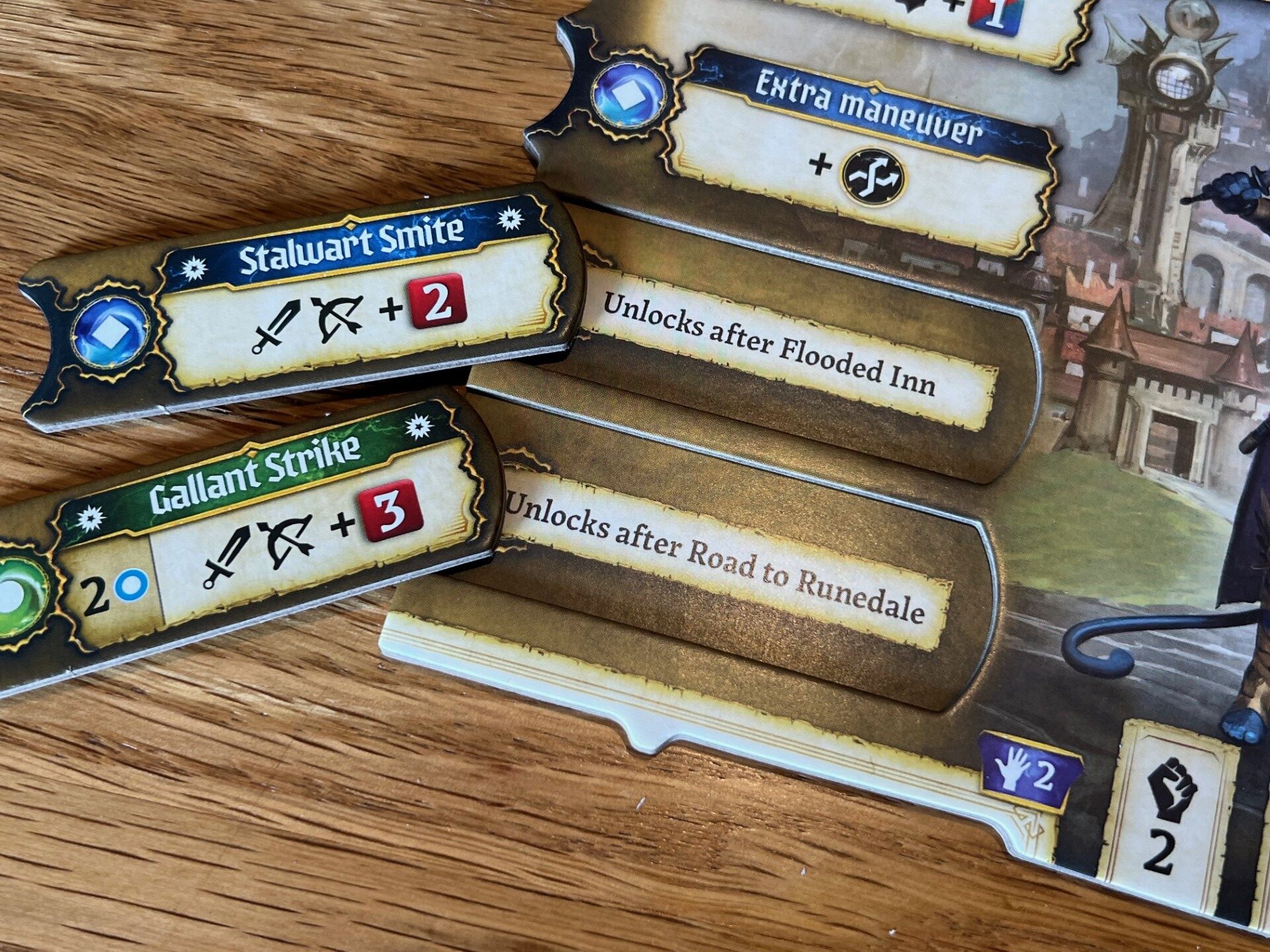
Actions and combat during scenarios work seamlessly, with players choosing their action for the next round using a special token to take a “unique” action, and then performing a standard manoeuvre action (in either order.) Unique actions include activating skills that are often (almost always) unique to each character and which have to be earned as the game progresses, whilst if you need to, any character can choose to perform an extra manoeuvre. The manoeuvre action is important because it allows stamina to be healed, or for additional movement steps to be taken.
This system is really simple and very clear to use, and I like that when you’re in a scenario, you can freely flow between exploration and combat without any additional upkeep. If you want to move a space, read a lettered event card, move another space and then use your special attack on an enemy — you can absolutely plan to do so. The other players can freely discuss their plans with you, then you all lock in your planned moves and draw an initiative card…
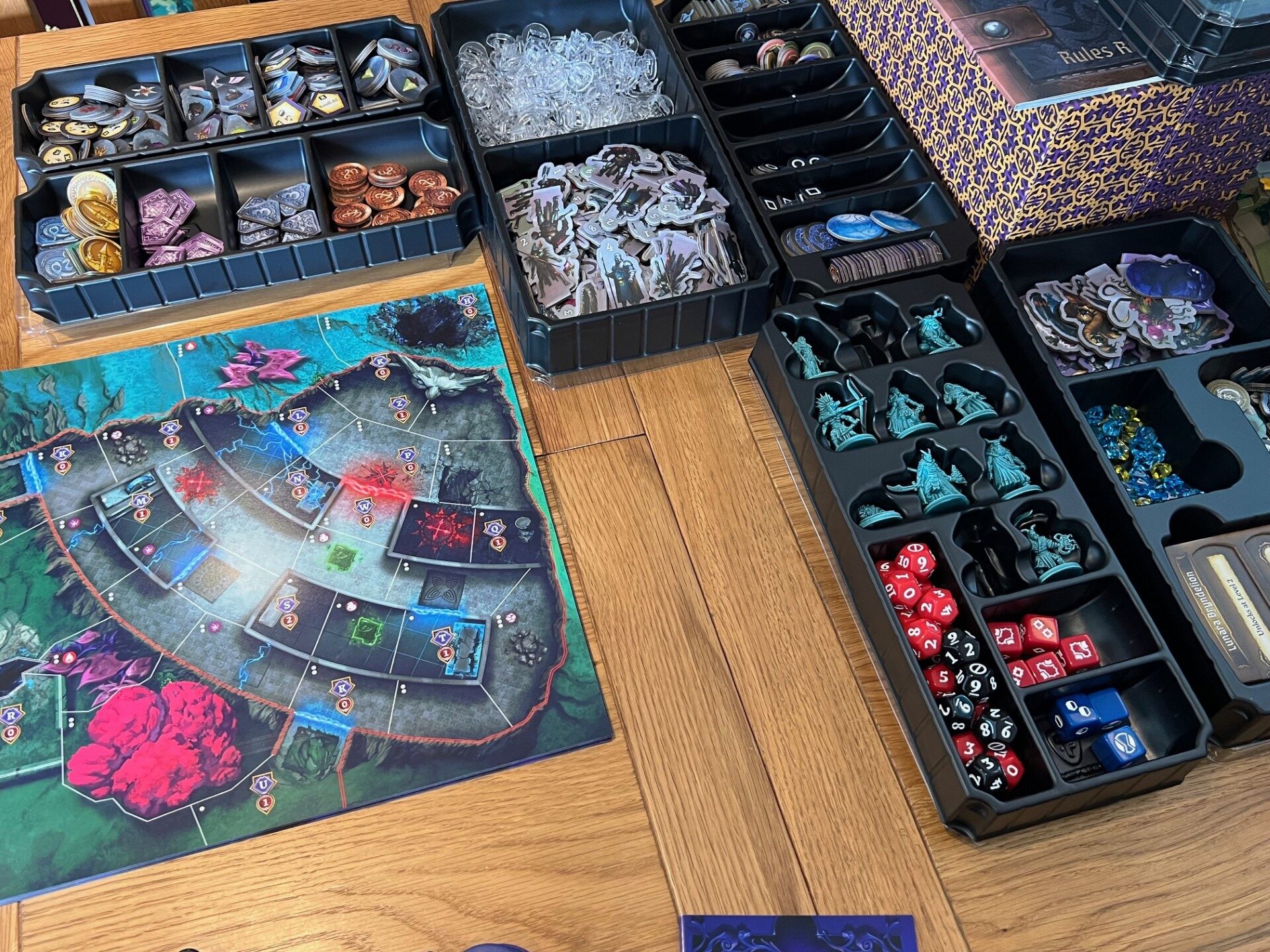
When an initiative card is drawn, it will determine who acts first this round – based on three coloured symbols that link to every skill and every enemy. Basically, red skills are fastest, blue medium, and green slowest, however some initiative cards flip this order completely, so whilst you are “generally” sure that you’ll act first or last, you can never be certain. When enemies act, a dice will be rolled and this links to the enemy ability colour on the initiative card, so it can lead enemies to using different attacks depending on the scenario. This adds loads of variety and interest, but again, it’s super simple to manage.
Often, initiative cards will act as the game timer as well, with players being told that they will suffer a consequence (whether good or bad) depending on how many rounds it takes them to achieve a certain thing. Similarly, initiative cards will be used to drive “direction specific” events in the game, and to trigger mid-scenario timed events. I know I’ve said it twice already, but I can’t overstate how simple and clear it is to be using one single deck to drive almost all “randomised” actions within the game space. Agemonia is very clever because it delivers the complex exploration, story and combat that I crave, but none of the overhead of many similar games.
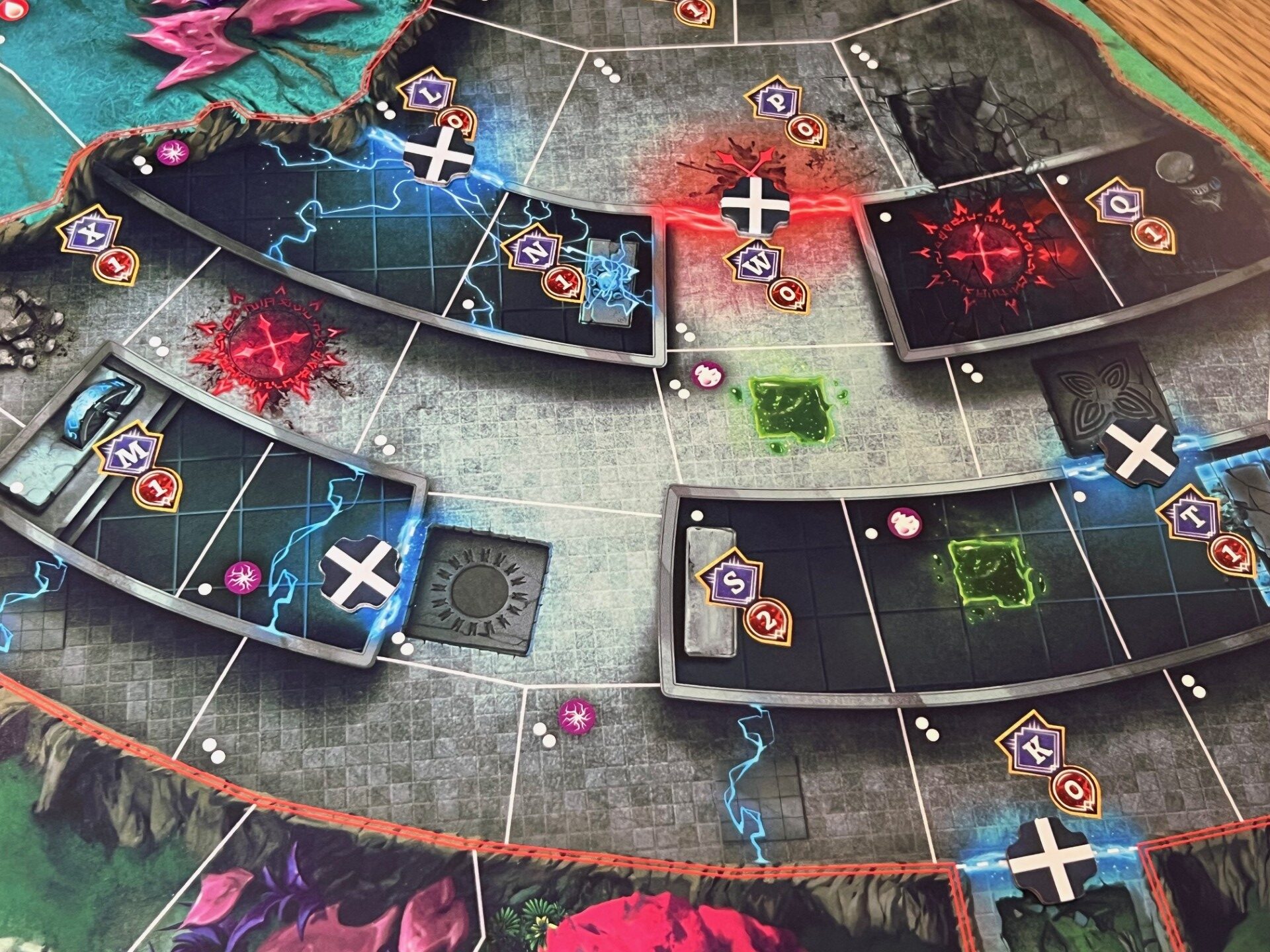
There’s also quite a bit more to Agemonia than I’ve said even so far — with things like guild trackers and all manner of secrets. Players can even extend their player boards to add even more extra skills as they level up. It really is a game of absolutely massive scope and ambition. The scenarios never get tired or repetitive, and whilst there are a lot of them, we don’t see the problem that say Gloomhaven has, which means you’ll never get to the end of it.
Overall, Agemonia has to be considered one of the most impressive and comprehensive adventure board games ever made. We knew it was pretty special when we previewed it back in 2021, but the final product is something else entirely, offering an incredibly high quality product that succeeds in almost every regard. Agemonia is fun to play, has smart and simple mechanics, loads of depth and lots of content, and it’s also an incredibly nice product to work through (at least after you’ve done the initial sorting). I honestly can’t recommend Agemonia enough.
You can purchase Agemonia from Amazon.
Comments are closed.